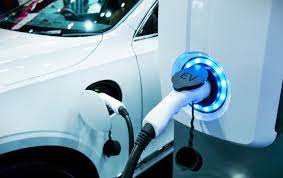Electric vehicle innovation
Electric vehicles (EVs) are an increasingly attractive low carbon transport option, thanks to their environmental benefits, lower running costs and ever-improving range of models.
At the end of 2020, there were 10 million electric cars on the world’s roads, with this figure predicted to increase to an impressive 145 million in 2030.
However, a wholesale switch to electric vehicles will require significant expansion of EV charging infrastructure, as well as technological innovations. We’ve picked our top five electric vehicle innovations to keep an eye on over the next few years.
Vehicle to grid
Smart charging options for electric vehicles are becoming increasingly popular, allowing drivers to control the time and rate of charge in response to energy demand, which helps to balance the grid.
However, the next step is vehicle to grid (V2G) charging, which allows energy stored in the vehicle’s battery to be exported to the grid during periods of high demand. EV drivers are turned into ‘prosumers’ – both consumers and providers of electricity – and are rewarded for their flexibility, which also benefits the grid.
Octopus Energy’s Powerloop project, in which Energy Saving Trust is a partner, is a good example of how V2G works. You can find out more about the project here.

Wireless charging
Wireless charging for vehicles works in a similar way to wireless phone chargers, using inductive charging technology. Electricity is transferred from one magnetic coil in the charger, which is hidden beneath the road surface, to a second magnetic coil or pad fitted to the underside of the car.
Charging electric cars, taxis and buses wirelessly has taken one step closer to reality, after a trial of wireless charging technology for taxis was announced in Nottingham in 2020. The Wireless Charging Electric Taxis (WiCET) project will see five wireless charging pads installed at a taxi rank in the city and nine electric taxis fitted with wireless charging pads.
The £3.4 million scheme, which is being funded by the Department for Transport, could be expanded more widely for public use if successful. One of the main benefits of wireless charging is that it allows multiple vehicles to recharge at once. It could also speed up charging and has potential as an on-street charging solution for people without driveways.

Ultra-fast charging
While it takes just a few minutes to fill up a petrol or diesel car with fuel, EV drivers usually have to wait much longer to recharge their batteries to full. However, ultra-fast charging options are starting to appear, proving to be a real benefit for longer journeys as they reduce charging times to the time it takes to have a regular driving break.
The Kia Ev6 and Hyundai IONIQ 5 electric cars, for example, can add 60 miles of range with just five minutes of charging, using a 250kW charger. And we’re now starting to see the development of even faster chargers. As of June 2022, there are 17 350kW electric charging stations in operation across the UK and a further two locations under construction, thanks to the Ionity joint venture.
Pop-up and lamp post chargers
One of the downsides of expanding electric vehicle charging infrastructure is that the chargers can clutter streets and pavements. However, two similar innovations could reduce this clutter: pop-up pavement chargers and lamp post chargers.
London-based EV charging company Urban Electric Networks has developed an on-street charging device, the UEone, which retracts into the ground when it’s not being used. It can be activated remotely using a smartphone app. The company trialled six pop-up fast chargers in Oxford in 2019-20, which proved a big success.
Another British company, Char.gy, has received funding from the UK Government to install plug-in points in lamp posts across London. According to Char.gy, a standard lamp post using LED bulbs will have around 24 amps of excess electricity supply, which can be used to charge cars, providing around 20 miles of driving for every hour of charging.
Similarly, the Gul-e project in Oxford, saw chargepoints installed in houses with no off-street parking with a gully placed in the pavement from the house to the kerb. A long charging cable connected the car to the charge point, allowing residents to charge up using their own (cheaper) electricity and removing both chargepoint clutter and trip hazards from cables lying across pavements.





